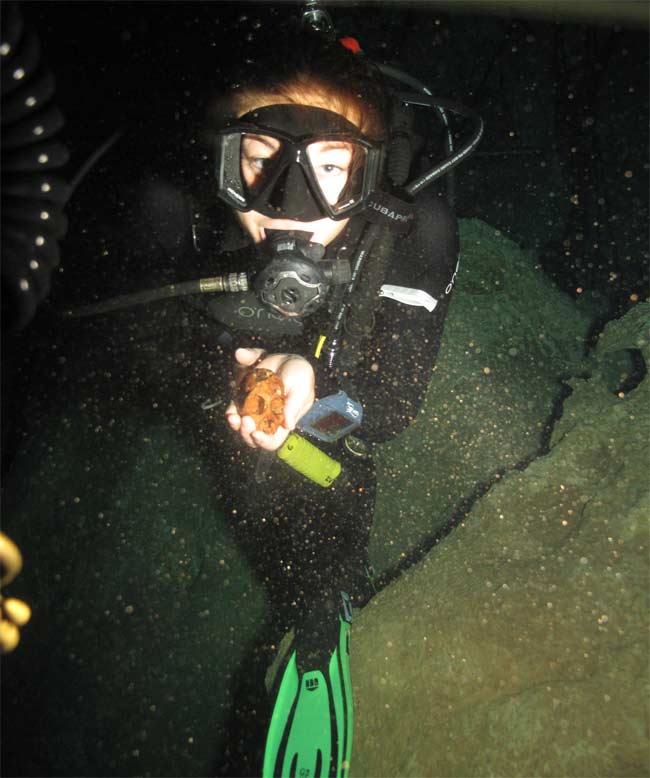Sloth and Primate Fossils Found in Underwater Cave

Bones from several Caribbean sloths and a primate skull, possibly from an extinct monkey, have been discovered in a prehistoric water-filled cave in the Dominican Republic, scientists reported today.
The animal bones were found alongside stone tools possibly crafted by humans. The researchers say the treasure trove holds clues to the Caribbean's earliest inhabitants.
"I couldn't believe my eyes as I viewed each of these astonishing discoveries underwater," said lead researcher Charles Beeker, director of Academic Diving and Underwater Science Programs at Indiana University, Bloomington. "The virtually intact extinct faunal skeletons really amazed me, but what may prove to be a fire pit from the first human occupation of the island just seems too good to be true."
The tools, made of basalt and limestone, were likely crafted some time between 6,500 and 4,000 years ago, while the animal bones range in age from 10,000 to 4,000 years old, according to the researchers.
The primate skull, which may have belonged to a howler monkey now extinct in the Caribbean, is notable for its small size. "Very few primate skulls have been found in the Caribbean," said Jessica Keller of IU Bloomington. "The others, found in the late 1800s and early 1900s, are three times as large."
The sloth bones included claws, jawbones and other skeletal remains, which the scientists say belonged to six or seven sloths, including one the size of a black bear and another dog-sized.
The researchers say sloths went extinct in the Caribbean soon after humans arrived.
Get the world’s most fascinating discoveries delivered straight to your inbox.
"I know of no place that has sloths, primates and humanly made stone tools together in a nice, tight association around the same time," said IU's Geoffrey Conrad. "Right now it looks like a potential treasure trove of data to help us sort out the relationship in time between humans and extinct animals in the Greater Antilles."
- Top 10 Amazing Things You Didn't Know About Animals
- Primate News, Information & Images
- Video – Clever Primates



